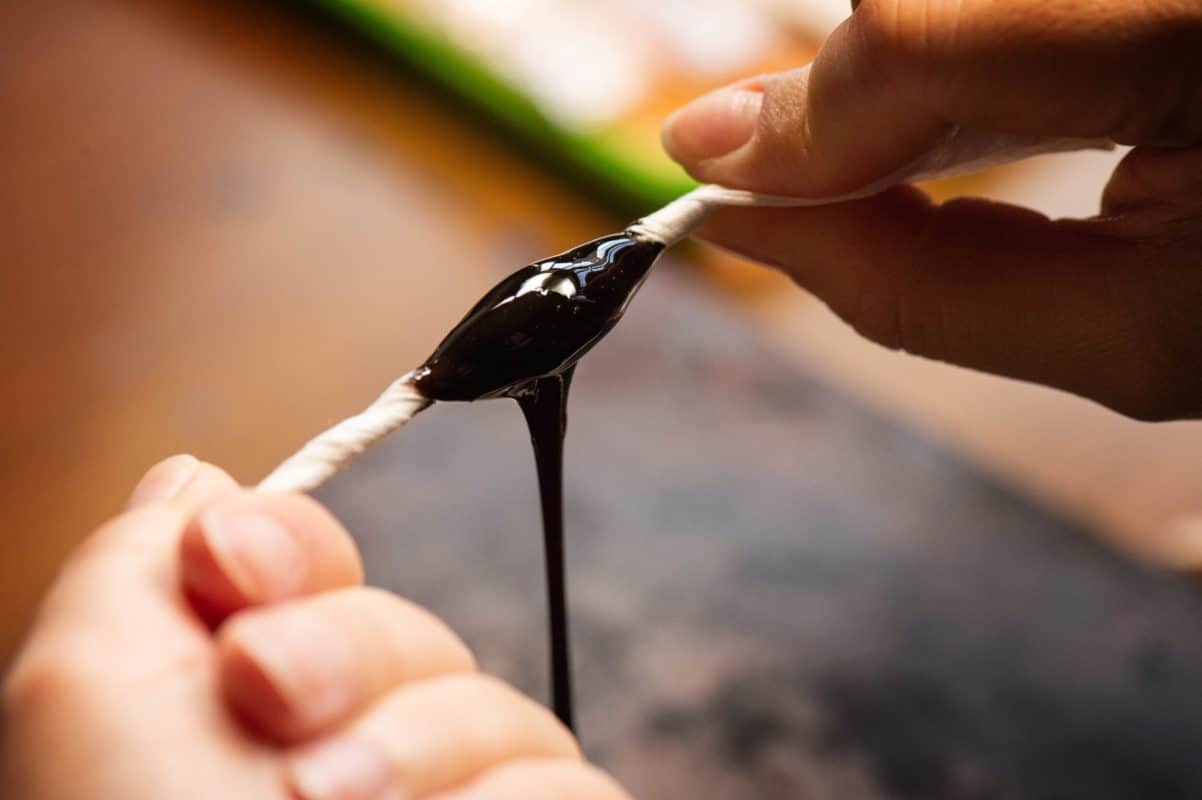Minase
Blue Urushi Silver Maki-e Dial for DIVIDO
Minase’s latest addition to the Divido collection pays tribute to Japan’s finest traditional crafts. Following the success of the blue hand-lackered embossed copper dial of the standard series, Minase is launching a special, artisanal version! This latest offering features a deep blue Urushi silver maki-e dial. Handcrafted in the Kyoto studio of Megumi Shimamoto, a master of traditional Urushi work, this new Divido dial needs many hours to be crafted, but it is so worth it!
Urushi and Maki-e traduitional technique
Urushi is a special lacquer fabricated from the sap of the Urushi tree, which is native to Japan, China, and Korea. Lacquer sap (which happens to have some pretty nasty toxic qualities in its “raw” state) is frequently used as a lacquer in Japan because of its very resistant properties. Indeed, it contains a resin that becomes very hard, durable, and plastic-like when exposed to moisture and air. Owing to its potential toxicity, it is not the easiest or most forgiving substance to work with.
Maki-e is a dial painting technique, that literally means “sprinkled picture”. A painted lacquer base is sprinkled with metal powder, silver in the case of Divido.
Urushi laquer’s origins
It is highly likely that the techniques to create lacquer pieces were imported to Japan from China. However, the discovery of lacquered ornaments dating from the Jomon Period (14,000 – 300 BC) provides evidence that lacquer craft also independently emerged in Japan very long ago.
The traditional urushi lacquer comes from the sap of the Asian lacquer tree – toxicodendron vernicifluum, also called Urushi tree. This tree is not easy to cultivate as its sap contains a highly allergetic oil, the same that can also be found in poison ivy! To harvest the sap, a couple of slashes are made in the tree for it to seep out. The freshly collected sap is called “arami”. It is grey-brown in color and includes impurities that need being removed. Hence, the sap is filtered several times through layers of special paper. The result is a translucent lacquer which color ranges from very light to a dark amber.
Application of Urushi and maki-e
After blending and straining the Urushi, the copper base dial is painted with a first layer of lacquer. Urushi lacquer is applied with a brush to the copper dial. Traditional Urushi brushes were made out of human hair because its texture was found to be just right. It is hard to find this kind of brush today even among traditional artisans. They mostly use brushes with mice or cats hair.
As the urushi lacquer hardens, it absorbs moisture from the air which makes the dial perpetually shiny and slick. It isn’t really useful for a dial that’s inside a watch case, but the Urushi lacquer also withstands erosion from water, acids, alcohol and changes in temperature.
To create a maki-e dial, the silver powder is applied before the lacquer dries. The powder is sprinkled over the dial with the use of a special wooden tool. Owing to the strong adhesiveness of lacquer when it dries, the powder will stick and harden. Another layer of lacquer, a mixture of blue pigments and transparent Urushi is then applied acting as a seal. The process is repeated twice.
After drying, the dials are polished several times enabling the silver powder to shine out. Thereafter, the dials are exposed to sunlight in order to bring out the color to its final shade. Lastly, the Minase logo will is printed.
The creation of one piece of Urushi art is very time-consuming. The careful application of many layers and the drying times between them, not to mention the ornamentation can take months.
Urushi in kanjis
The word “urushi” is also used for the lacquerware itself, and some people say that the word comes from two other Japanese words: “uruwashi”, meaning “beautiful”, and “uruosu”, which means “to moisten”. If you enjoy kanjis, you will be interested to learn that the kanji for urushi (漆) is unique in that it is perhaps the only tree kanji which does not have the tree radical (木) prominent on the left side, such as “桜” for sakura (cherry blossom) and “楓” for maple trees. Instead, the radical for water is there (氵), which emphasizes that the tree is valuable not so much for its wood, but its water, or sap. To remember the right side, you can use the following mnemonic: when a tree (木) is cut (symbolized by the upside-down “v”), water (水) comes out. That is some handy information if you are interested in studying Japanese kanji!

Urushi master Megumi Shimamoto
Megumi Shimamoto, based in Kyoto, is a master of the Urushi craft. For this blue Urushi and silver maki-e dial edition, she used one of the most simple techniques to produce Maki-e, as it had to display one color only and no motives. Nonetheless, she spent many hours to complete every single dial.











